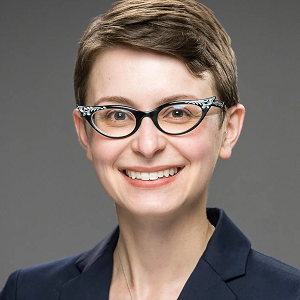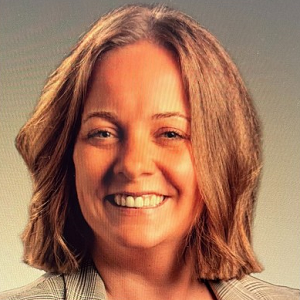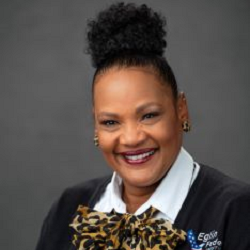Top-Level Takeaways
- Financial literacy courses are increasingly becoming a graduation requirement in U.S. high schools, with mandates already in place in half of the states.
- States like Oregon, Pennsylvania, and Florida are integrating financial literacy into their educational systems.
- Credit unions in these states are actively supporting financial education by offering curriculum support, workshops, interactive resources, and ongoing community partnerships to ensure students retain and apply financial concepts in real life.
High school financial literacy requirements are gaining traction nationwide. In fact, legislation mandating students take such a course to graduate has passed in half of the 50 states and is estimated to impact 53% of students in the United States.
A stand-alone personal finance course will be mandatory in Pennsylvania starting with the Class of 2030. In both Oregon and Florida, the Class of 2027 and beyond must complete a half-credit course that focuses on personal finance or financial literacy, respectively.
A Train-The-Trainer Model In Oregon
“We were a big advocate for carving out a half credit explicitly for financial education in Oregon,” says Peter Walker, vice president, organizational development for Oregon State Credit Union ($2.3B, Corvallis, OR).
The half credit will be part of a course focused on planning for the future that also will include general life skills such as job interviews and internships.
Oregon State has employed a full-time financial educator since 2003 and offers in-person financial education at K-12 schools, community colleges, and various community organizations.

“Students and adults need to hear this information from a lot of different people and in multiple ways to really absorb it,” says Audrey Bailey, community education director.
As a team of one, Bailey’s role is to create sustainable methods to deliver financial empowerment to the various communities the credit union serves. That includes providing curriculum and instruction to meet the many needs of the 24 Oregon counties within its field of membership. And as schools prepare to meet new statewide financial literacy requirements, Oregon State’s role continues to evolve.

“In the past, my teacher connections might have asked me to come in and talk about a specific topic like the psychology of money,” says Bailey. “As we look ahead, I’m helping more of their colleagues gain access to the resources they need.”
That includes ready-made lesson plans and fun activities along with teacher training. Importantly, it’s key to make lessons relevant to the learner.
“It’s similar to motivational speaking,” Bailey says. “Your message should make people believe they can do it.”
It’s also important to encourage two-way dialogue. Financial education isn’t just about participants receiving knowledge; sometimes they have something to share, too. To allow room for discussion, Bailey keeps her messages and lesson plans clear and concise.
CU QUICK FACTS
OREGON STATE CREDIT UNION
HQ: Corvallis, OR
ASSETS: $2.5B
MEMBERS: 143,643
BRANCHES: 15
EMPLOYEES: 281
NET WORTH RATIO: 10.62%
ROA: 0.65%
“The 15 minutes of questions at the end might be the only thing people remember,” she says.
When one person shoulders the responsibility of an entire organization’s financial wellness program, they can easily burn out. That’s why Bailey leans heavily on a train-the-trainer model. For example, instead of personally delivering a custom curriculum to prisons throughout the state — as in years past — Oregon State Credit Union has trained transition coordinators to teach the approximately 750 individuals transitioning out of prison each quarter.
“The need for financial education can be a bottomless pit, so we have to make choices about what we say, ‘yes,’ to and leverage partners to deliver the resources and materials our community really needs,” Walker says.
A Classroom-Sized Approach In Pennsylvania
At Erie Federal Credit Union ($785.1M, Erie, PA), engaging more intimately with local schools and organizations to understand and meet community needs is key.

“For us, doing good is good business,” says Thomas Brennan, chief marketing officer.
In 2023, Erie FCU invested in 100% of its staff becoming certified financial counselors through the HERO program to provide on-the-spot assistance for low- and moderate-income individuals and families. The rust-belt cooperative is a low-income designated credit union and its field of membership includes one of the poorest zip codes in the state.
“We didn’t want members in distress getting referred all the time,” Brennan says. “Now, everyone can address basic financial needs.”

Katey Cross, director of community outreach, has been with Erie FCU for nearly a year and has focused on tailoring the credit union’s programs toward specific audiences during her tenure.
“We avoid broad topics and address specific needs,” Cross says. This means hyper-focusing on what each segment can relate to like using coins for five- and six-year-olds or retirement planning for adults.
The credit union’s original SEG was Erie school employees, and those deep roots remain strong.
“Many of our board members are former school administrators and our headquarters building used to be an elementary school,” Brennan says.
This insider knowledge has led Erie FCU to take a more intimate approach to its financial literacy efforts.
“A lot of people have moved to schoolwide financial literacy fairs, but we prefer a per-classroom approach so we can customize it to what they need to know,” the CMO says.
CU QUICK FACTS
ERIE FCU
HQ: Erie, PA
ASSETS: $785.1M
MEMBERS: 76,377
BRANCHES: 11
EMPLOYEES: 205
NET WORTH RATIO: 9.7%
ROA: 0.16%
The smaller the audience, the more engagement Erie FCU sees.
“We read the room and better gauge their specific interest or address more questions,” Cross says.
After presentations, the credit union leaves students and educators with many different tools to help them continue learning. The credit union is often referred to other schools and asked back to present multiple sessions, underscoring its positive impact.
Moving forward, Erie FCU is deepening partnerships with schools and community organizations like the United Way.
“In the coming months, we’ll be formalizing a new partnership with the United Way to help focus our efforts where there is the most need,” Cross shares.
The director of community outreach has learned that providing a menu of common financial literacy topics helps educators and others pinpoint what’s most relevant to their audience versus asking open-ended questions regarding needs.
“Not everyone is an expert in banking or finance,” Cross says. “They might not realize all that we can cover.”
Real-Life Scenarios, Goal Setting, And Continual Support In Florida

“We believe in the importance of financial literacy and empowerment for our members and the communities we serve,” says Neko Stubblefield, vice president of membership and community development for Eglin Federal Credit Union ($2.9B, Fort Walton Beach, FL).
Eglin has actively focused on financial education for a number of years. In 2019, the credit union established a membership and community development department and introduced the role of financial education specialist to focus on serving the financial education needs of members and the community.
The cooperative offers a comprehensive range of programs, including free workshops and seminars, online resources, community partnerships, and financial counseling.
CU QUICK FACTS
EGLIN FCU
HQ: Fort Walton Beach, FL
ASSETS: $2.9B
MEMBERS: 124,053
BRANCHES: 11
EMPLOYEES: 417
NET WORTH RATIO: 11.8%
ROA: 0.94%
“Through these initiatives, we aim to equip our members with the knowledge, skills, and confidence they need to make sound financial decisions and achieve their goals,” Stubblefield says.
The credit union has also recently formed a partnership with local schools to provide required financial education for students.
The partnership includes:
- Curriculum support — Eglin collaborates with educators to integrate financial literacy concepts into existing curriculum, ensuring students receive consistent, comprehensive financial education throughout their academic journey.
- Guest speaker and workshops — Eglin’s financial education specialist leads engaging classroom workshops and presentations on financial topics, providing students with real-world examples and practical advice.
- Interactive resources — Eglin provides educational materials, games, and other interactive tools — in-person and on its website — designed specifically for students, making financial literacy fun and accessible.
Ensuring students retain and apply what they’ve learned in financial education programs is a crucial aspect of building long-term financial literacy. To that end, Stubblefield offers a few best practices:
- Real-life scenarios — Add real-world examples and scenarios in financial education curriculum to help students apply financial concepts to their lives.
- Repetition and reinforcement — Repeat key concepts throughout the program and use different methods — such as quizzes, group discussions, and case studies — to reinforce learning.
- Family involvement — Encourage students to share their financial education experiences with their families to create a supportive environment for practicing and discussing financial skills at home. Eglin’s high school financial education teachers provide students a family financial wellness assessment that students and their parents complete together and return to school as part of their required curriculum.
- Financial goal-setting — Help students set short-term and long-term financial goals and develop action plans to achieve them to make their learning more tangible and applicable.
- Ongoing support — Provide ongoing resources and support — such as online resources or refresher workshops — to students after they complete the financial education program.
“Tailoring your content to meet the needs and interests of different age groups, demographics, and cultural backgrounds is important,” Stubblefield says. “Using a variety of delivery methods, such as interactive workshops and digital resources, also helps engage a broader range of learning styles and preferences.”